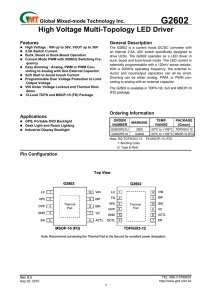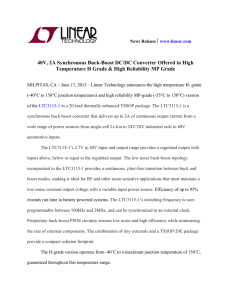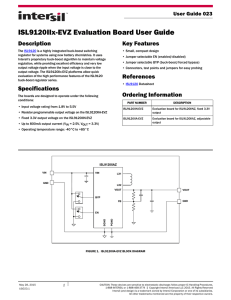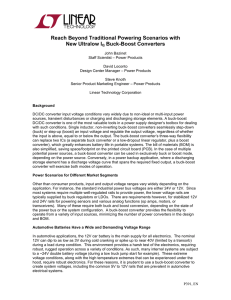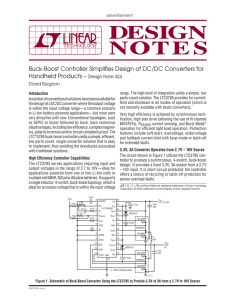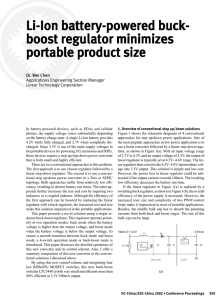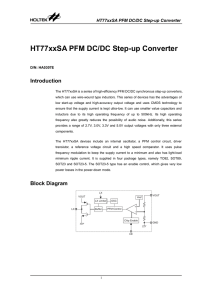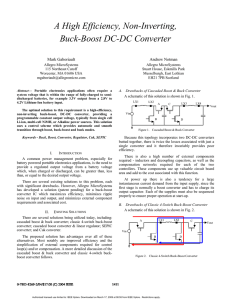Buck-Boost Converter Enables Three Modes of
advertisement
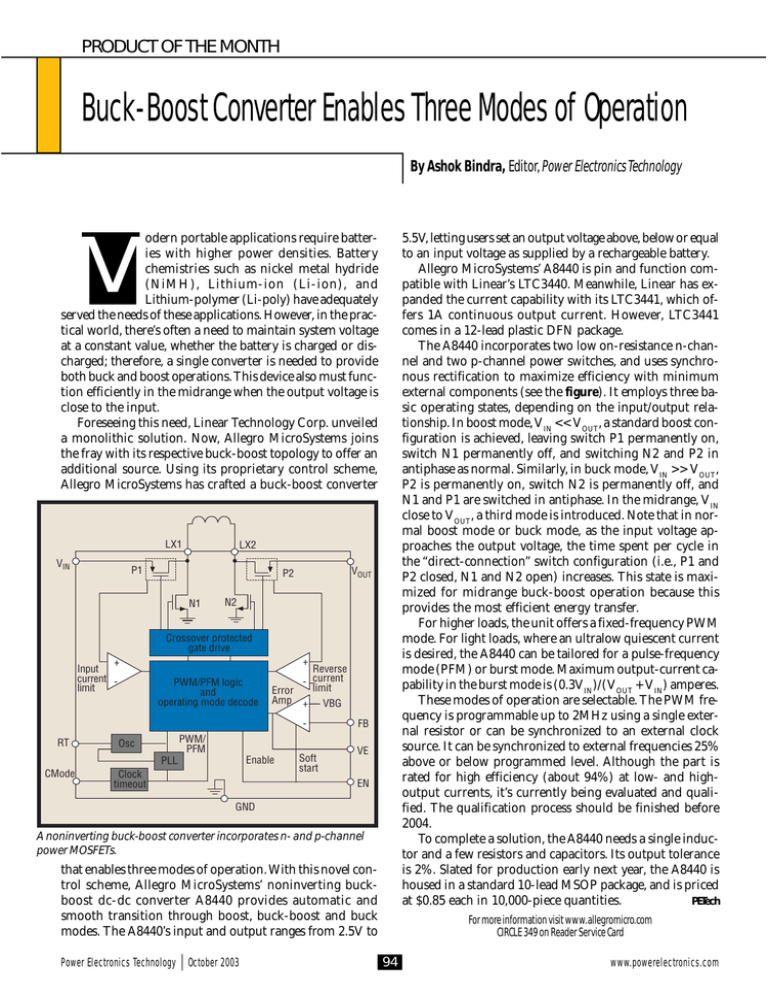
PRODUCT OF THE MONTH Buck-Boost Converter Enables Three Modes of Operation By Ashok Bindra, Editor, Power Electronics Technology odern portable applications require batteries with higher power densities. Battery chemistries such as nickel metal hydride (NiMH), Lithium-ion (Li-ion), and Lithium-polymer (Li-poly) have adequately served the needs of these applications. However, in the practical world, there’s often a need to maintain system voltage at a constant value, whether the battery is charged or discharged; therefore, a single converter is needed to provide both buck and boost operations. This device also must function efficiently in the midrange when the output voltage is close to the input. Foreseeing this need, Linear Technology Corp. unveiled a monolithic solution. Now, Allegro MicroSystems joins the fray with its respective buck-boost topology to offer an additional source. Using its proprietary control scheme, Allegro MicroSystems has crafted a buck-boost converter 5.5V, letting users set an output voltage above, below or equal to an input voltage as supplied by a rechargeable battery. Allegro MicroSystems’ A8440 is pin and function compatible with Linear’s LTC3440. Meanwhile, Linear has expanded the current capability with its LTC3441, which offers 1A continuous output current. However, LTC3441 comes in a 12-lead plastic DFN package. The A8440 incorporates two low on-resistance n-channel and two p-channel power switches, and uses synchronous rectification to maximize efficiency with minimum external components (see the figure). It employs three basic operating states, depending on the input/output relationship. In boost mode, VIN << VOUT, a standard boost configuration is achieved, leaving switch P1 permanently on, switch N1 permanently off, and switching N2 and P2 in antiphase as normal. Similarly, in buck mode, VIN >> VOUT, P2 is permanently on, switch N2 is permanently off, and N1 and P1 are switched in antiphase. In the midrange, VIN close to VOUT, a third mode is introduced. Note that in normal boost mode or buck mode, as the input voltage approaches the output voltage, the time spent per cycle in the “direct-connection” switch configuration (i.e., P1 and P2 closed, N1 and N2 open) increases. This state is maximized for midrange buck-boost operation because this provides the most efficient energy transfer. For higher loads, the unit offers a fixed-frequency PWM mode. For light loads, where an ultralow quiescent current is desired, the A8440 can be tailored for a pulse-frequency mode (PFM) or burst mode. Maximum output-current capability in the burst mode is (0.3VIN)/(VOUT + VIN) amperes. These modes of operation are selectable. The PWM frequency is programmable up to 2MHz using a single external resistor or can be synchronized to an external clock source. It can be synchronized to external frequencies 25% above or below programmed level. Although the part is rated for high efficiency (about 94%) at low- and highoutput currents, it’s currently being evaluated and qualified. The qualification process should be finished before 2004. To complete a solution, the A8440 needs a single inductor and a few resistors and capacitors. Its output tolerance is 2%. Slated for production early next year, the A8440 is housed in a standard 10-lead MSOP package, and is priced at $0.85 each in 10,000-piece quantities. PETech M LX1 VIN LX2 P1 VOUT P2 N1 N2 Crossover protected gate drive + Input current limit + PWM/PFM logic and operating mode decode Reverse - current limit Error Amp + VBG - RT CMode Osc PLL PWM/ PFM Enable Clock timeout Soft start FB VE EN GND A noninverting buck-boost converter incorporates n- and p-channel power MOSFETs. that enables three modes of operation. With this novel control scheme, Allegro MicroSystems’ noninverting buckboost dc-dc converter A8440 provides automatic and smooth transition through boost, buck-boost and buck modes. The A8440’s input and output ranges from 2.5V to Power Electronics Technology October 2003 For more information visit www.allegromicro.com CIRCLE 349 on Reader Service Card 94 www.powerelectronics.com
